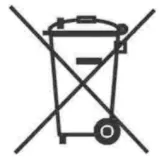
Optical Module UL 62368-1 Certification Testing
Introduction to Optical ModULes
An optical module is a photoelectric device used for optical-electrical and electro-optical conversion. The transmitter of the optical module converts electrical signals into optical signals, while the receiver converts optical signals back into electrical signals.
Optical modules are classified based on their packaging types, with common ones including SFP, SFP+, SFF, and Gigabit Interface Converter (GBIC).
An optical module consists of optoelectronic components, functional circuits, and optical interfaces. The optoelectronic components include both transmitting and receiving sections. Simply put, the function of an optical module is to convert electrical signals into optical signals for transmission through optical fiber, and then reconvert optical signals into electrical signals at the receiving end.
UL certification for Optical Modules
Since optical modules involve optoelectronic conversion, they must comply with ul 62368-1 certification when exported to the U.S. Below is an overview of the testing requirements, requiRED documentation, and certification process for UL 62368 certification of optical modules.
UL 62368-1 Testing Items for Optical Modules
1. Input/Output Testing
2. Leakage Current from Enclosure Measurement
3. Risk of Electric Shock (Touch Current)
4. Normal & Abnormal Temperature Tests
5. Abnormal Testing (Class P) – Fault Condition Tests for Electronic Ballasts (Class P)
6. Dielectric Voltage Withstand Test
7. Drop Test
8. Strain Relief Test
9. Mold Stress Test
10. Humidity Test
Required Documentation
The following documents must be prepared for certification:
1. Product application form
2. Product manual
3. Circuit schematic diagram
4. PCB layout diagram
5. Bill of Materials (BOM)
6. Product structural dimension drawings
7. FDA CDRH report
Certification Process and Steps
1. Fill out the application form.
2. Initiate the quotation process.
3. Confirm the quotation and sign the contract.
4. Make payment, initiate the case, and sign the agreement with the testing laboratory.
5. Provide samples and required documentation.
6. Start testing and collaborate on product documentation.
7. Certification completion and issuance of the certificate.
This translation maintains clarity, professionalism, and readability while ensuring technical accuracy. Let me know if you'd like any modifications!
Email:hello@jjrlab.com
Write your message here and send it to us
 WEEE Registration for Waste Electrical &Electr
WEEE Registration for Waste Electrical &Electr
 MSDS Chemical Safety Testing
MSDS Chemical Safety Testing
 What Are the Differences Between UK REACH and EU R
What Are the Differences Between UK REACH and EU R
 E-Cigarette GB 41700 Compliance Testing
E-Cigarette GB 41700 Compliance Testing
 What Are the Testing Items of California Propositi
What Are the Testing Items of California Propositi
 E-Cigarette EU TPD Testing
E-Cigarette EU TPD Testing
 Testing Certification for E-cigarettes Exported to
Testing Certification for E-cigarettes Exported to
 What is Amazon US CPC Certification?
What is Amazon US CPC Certification?
Leave us a message
24-hour online customer service at any time to respond, so that you worry!




